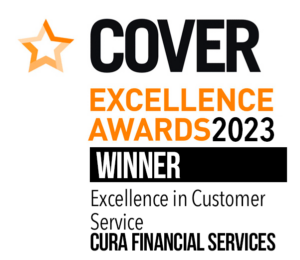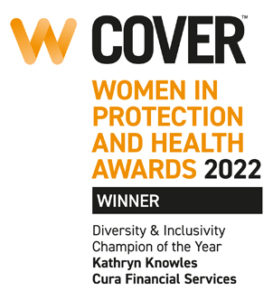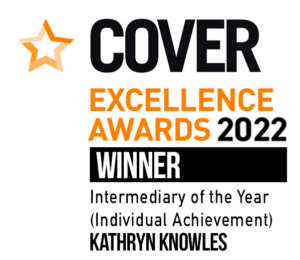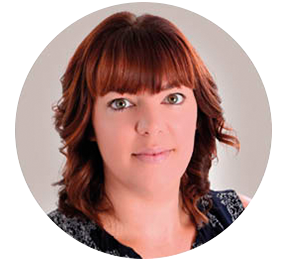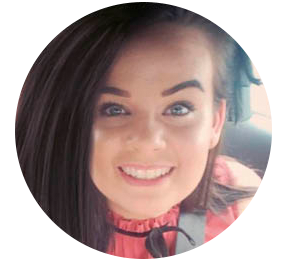Ehlers-Danlos Syndrome & Life Insurance
Request a Callback
By clicking on submit I / We give consent for you to call me / us on the number provided to discuss my / our financial requirements.
Caring - Understanding - Reliable - Advice
Home » Ehlers-Danlos Syndrome & Life Insurance
Ehlers-Danlos Syndrome & Life Insurance
 I have hypermobility syndrome, which is closely linked to Ehlers-Danlos Syndrome, and whilst they are not completely the same they are similar.
I have hypermobility syndrome, which is closely linked to Ehlers-Danlos Syndrome, and whilst they are not completely the same they are similar.
I know what is like to break, sprain and dislocate different parts of your body, by doing ‘normal’ everyday things. Jam jar lids are the bane of my existence!
When it comes to insurances, it’s important to know exactly what insurers will want to know about you, I know because I went through this and had difficulty arranging my insurances.
Things we need to know:
- What type of EDS have you been diagnosed with?
- When were you diagnosed?
- Do you take any medication?
- Have you required any surgeries?
- Do you have any heart or digestive symptoms?
- Do you need to use mobility aids?
These are some of the main questions that we will need to chat through. The type of EDS that you have and how strong your symptoms are, will have a bearing on the insurance companies that will be good for you to approach for life insurance.
Life insurance for people with Ehlers-Danlos Syndrome is generally available at non-standard rates, which means an increase to the premium loadings. But, this is not always the case and we have arranged cover at standard premiums before.
You are most likely to get standard terms for life insurance if you have type 3 Ehlers-Danlos Syndome. This depends a lot upon your symptoms and any complications that you experience due to the condition.
People with EDS that has been classed as type 1 or type 2, are most likely to see a premium increase and we may need to speak with a specialist insurer to get you the cover that you want. You may be able to get standard terms, but it is a good idea to be prepared that this is not often available.
The insurer that you apply to for life insurance will probably want to see a report from your GP about your health. This is quite a standard practice and should not cause a concern, it is arranged and paid for by the insurer, and we follow this every step of the way for you. You may feel that a GP report is excessive, but in the insurance world EDS is still seen as a “rare disease”.
You may find it useful to listen to a podcast that I host with an industry expert on insurance processes and underwriting, where we discuss rare medical conditions, insurance and raise awareness of EDS. But I must warn you that I do go off on a little rant about how this medical condition is perceived by insurers .
Hypermobility Syndromes Association (HMSA)
Members of the Hypermobility Syndromes Association (HMSA) often contact us to ask us whether we know where they can get affordable insurance cover for travel abroad. It is always shocking to hear of the high costs being quoted to members who have Marfan syndrome or Osteogenesis Imperfecta or the Ehlers-Danlos syndrome subtypes. Cura offers a comprehensive cover without penalising members of the HMSA for having genetic conditions. This is why the HMSA confidently directs members to Cura Insurance.
Donna Wicks, CEO HMSA
Ehlers-Danlos Syndrome & Critical Illness Cover
Critical illness cover pays out a cash lump sum of money, if you are diagnosed with a medical condition that is listed in the insurer’s claims set e.g. cancer, heart attack, stroke.
Arranging critical illness cover when you have EDS can be a bit trickier than life insurance.
This is mainly due to the fact that Ehlers-Danlos Syndrome can impact upon the hearts functioning and other internal organs, which could lead to a higher risk of you making a claim on the policy. Even having mild POTS (postural tachycardia syndrome) could influence the insurer’s decision.
If you have had your heart scanned and checked, been told that everything is tickety-boo, then this can improve the chance of you getting personal critical illness cover on the standard market.
There are some critical illness policies that can be arranged on a group basis. This means that they are arranged by an employer for their staff. If you own your own company, or are in a position to speak about this with your employer, it could be a good option for you.
Group critical illness cover comes with a level of non-medical underwriting. This means that you will not be asked about your medical history when accessing the insurance, but there may be some exclusions and it’s important to speak with an adviser that can go through these with you.
There are also some specialist insurers that we can approach to get you the critical illness cover, if these other routes aren’t right for you.
Ehlers-Danlos Syndrome & Income Protection
Income protection pays you a replacement of your monthly income, if you are unable to work due to ill health.
Income protection is another trickier insurance to arrange. With the higher risk of breaks, sprains and potential heart symptoms, insurers see that having EDS makes someone more likely to place a claim for income protection.
I appreciate that this is annoying, but if I’m honest with myself and you, I do get it. I know that I’m more likely to seriously hurt myself, than someone that doesn’t have our bendy collagen, and insurance is all about risk.
Income protection for people with Ehlers-Danlos Syndrome is available with some specific insurance policies. The eligibility criteria for this is quite strict and might be dependent upon your employer setting up a company funded income protection plan.
This could be arranged through your employer, or your own company, and is known as a Group Income Protection scheme. Please contact us if you want to discuss this option.
The Seven Families is a charity-led campaign focused upon demonstrating the real value of income protection. Not just the money, but all of the extras that can come with these policies.
Part of their work was to help a woman named Melanie Knights, who had to give up her career as a midwife, when she was diagnosed with EDS. In this video, Melanie and her partner talk about the shock to the family when her income suddenly stopped.
An alternative to income protection is a policy called Accident, Sickness and Unemployment cover. This type of policy offers short-term income protection over a period of 12 to 24 months if you are unable to work due to disability, long-term illness or involuntary redundancy.
An accident, sickness and unemployment policy is not medically underwritten, meaning that the diagnosis of Ehlers-Danlos Syndrome will have no bearing on the terms of cover that you are offered.
You should be fully aware though that any claim that you place will exclude inability to work due to circumstances related to the Ehlers’ Danlos Syndrome.
Ehlers-Danlos Syndrome & Travel Insurance
Escaping the UK weather? It is always a good idea to make sure that you have good travel insurance in place. If you would like to get some quotations please visit our dedicated travel page here.
Video Transcript
CuraVision ABCs Ehlers-Danlos Syndrome – Video Transcript
Hi everybody. Today I want to talk about Erica and Suzie, who came to us because they needed some protection in place. Now, Erica came to us, she was in her early 40s. They were both non-smokers, perfect BMI. And the reason that Erica came to us is because she had classical Ehlers-Danlos syndrome, which had been diagnosed as a child. Now she had a very small physical trait, but bar that, wasn’t symptomatic at all, and had really nothing bar this original diagnosis when she was a child. And with Erica, what was really interesting is the fact that she had to have medicals every year for her job, to show her fitness and health levels. As well as some mini-screens in-between that time, as well, if needed.
We identified that there was a need for life and critical illness cover, to protect their mortgage, essentially. And we went to all of the insurers that we speak to, and all but one declined to offer her the insurance. Now the insurer that we did speak to, I’m really pleased to say, took the time to listen to the situation, and to see the condition, and the person, and how it actually affected them, which was essentially not at all, and look past her diagnosis.
We went for GP reports, everything was going brilliantly. And the GP report came in, and the insurer did decline the cover. Now, we weren’t prepared to take that as an answer based upon everything we’d discussed so far. So, we went back and spoke to the insurer, in depth, about what was going on. And I’m pleased to say, that within a day, we had that decision overturned. And we were able to get Erica and Suzie standard life insurance and critical illness cover. So, we were able to arrange for them decreasing life and critical illness cover of £246,000 over 25 years, for a monthly premium of £120.
What is Ehlers-Danlos Syndrome?
Ehlers-Danlos Syndrome (EDS) is a connective tissue disorder that is diagnosed within the collagen within the body is reduced or weaker than normal. The key indicators of the condition are joint hypermobility, stretchy and fragile skin.
Ehlers-Danlos Syndrome is an inherited condition and is often diagnosed through a physical examination of the individual; in some cases a small skin biopsy will be taken to determine the type of EDS that is present.
Also: Hypermobile EDS, classical EDS, vascular EDS, kyphoscoliotic EDS, dermatosparaxis EDS, arthrochalasic EDS, EDS I, EDS II, EDS III
Linked with: Hypermobility Syndrome, osteoarthritis, postural tachycardia syndrome (POTS), osteoporosis
Some potential problems experienced by individuals who have Ehlers-Danlos include:
- Dental issues
- Difficulty completing household chores
- Difficulty with fine motor skills
- Excessive bruising
- Fatigue
- Gastrointestinal problems
- Incontinence
- Increased risk of broken bones and muscle sprains
- Internal organ rupture
- Joint contractures
- Loose joints
- Mitral valve prolapse
- Pneumothorax
- Restrictions on exercise
- Slower wound recovery
- Spinal curvature (Kyphoscoliotic)
- Stretchy velvety skin
- Vascular problems
- Occupational therapy
- Physiotherapy
By clicking on the link(s) above you will be departing from the regulatory site of Cura Financial Services. Cura Financial Services is not responsible for the accuracy of the information contained within the linked site(s).
Common Questions
Hi, it’s nice to hear from you. The answer is that it depends. I would love to be able to give you a direct answer now, but I need to know quite a few more things. The main things for me to know are if you have had your heart checked and the results of these checks, and how the EDS affects you on a daily basis e.g. are you able to work. Once I know this I can start to advise you more. I have arranged life and critical illness for someone living with type 1 Ehlers-Danlos before, so it’s definitely worth having a chat.
Client Reviews
Cura Financial Services has been rated 4.9 out of 5 based on 831 reviews.
Review by Liz on 5th February 2020
“Every step of the way, I was kept updated and informed. Excellent service, nothing was too much trouble. I especially liked that everything was explained well without patronising me.” - 5
You can read more of our reviews here.
- For more information on specific health conditions, pastimes, occupations and countries please select here:

Dr Kathryn Knowles Phd
Author
This page was written by Dr Kathryn Knowles Phd, an award-winning insurance adviser. To read more about Kathryn please see her bio here

Client Reviews








Talk to a Friendly Adviser
Get a Quote
What We Offer?
- Experienced and knowledgeable advisers
- Specialist advice with no fees to pay
- Full assistance with all of your paperwork
- Put your policy into trust at no cost
- A dedicated insurance adviser for you
Our Recent Awards


